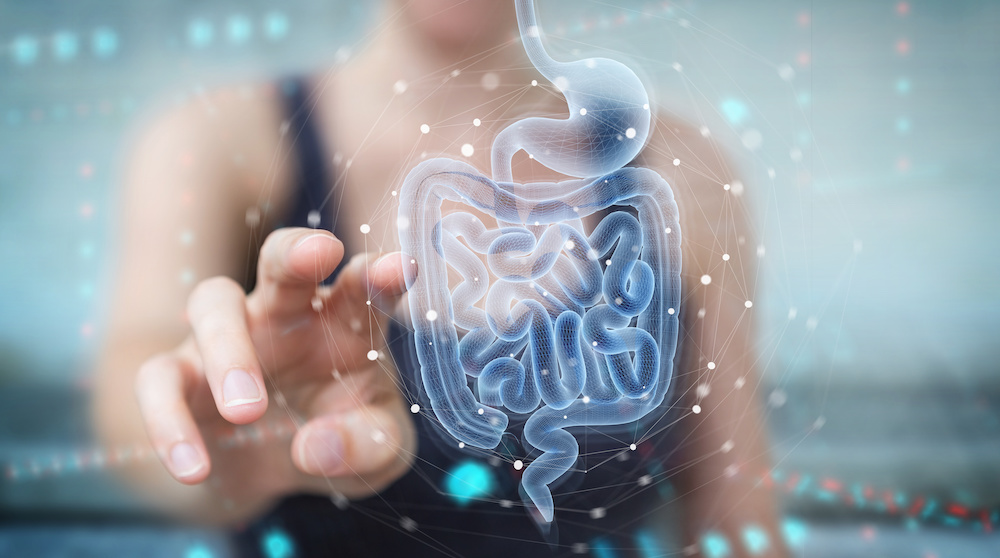Dietitian Blog, MNT Guidelines, Nutrition Support | Oct 4 2022
The art and science of managing enterocutaneous fistulas

Enterocutaneous (EC) fistulas are relatively rare but require complex nutrition management. EC fistulas are defined as an abnormal connection between the gastrointestinal tract and the skin. A fistula may spontaneously occur from underlying inflammatory conditions but can also occur as a complication of gastrointestinal surgery. EC fistulas lead to losses of fluid, electrolytes, minerals, and protein. Therefore, they can make nutrition via the enteral route difficult if output is not manageable.
Management of fistulas demands a comprehensive team approach of doctors, radiologists, wound nurses, pharmacists, and dietitians. Due to the complexity of EC fistulas, as well as the relatively low incidence of patients with fistulas, there is a lack of widely accepted guidelines on EC fistula management. Nonetheless, nutrition management of an EC fistula to provide adequate nutrient requirements, maintain fluid and electrolyte balance, and enhance appropriate EC fistula healing is attainable.
Perform a chart review
When an EC fistula is suspected, parenteral nutrition or nil per os status is often used during the initial workup phase until more data is collected. Following the medical team’s work-up and before deciding on your next nutrition steps, perform a comprehensive chart review and discuss the plan with your healthcare team. Consider the following components, as these will impact your nutrition decisions:
- Origin of the fistula and length of healthy bowel proximal and distal to the fistula. Refer to radiology imaging to determine overall bowel anatomy.
- Likelihood of spontaneous closure. Discuss the goals of therapy with the provider. In some cases, the wound may be expected to close spontaneously with appropriate interventions. In other cases, surgery may be necessary.
- Output volume of the fistula and ability to protect surrounding tissue. High output fistulas are often defined as output of >500 milliliters per day and may lead to excess loss of fluid, electrolytes, and protein. Furthermore, if surrounding tissue is not protected and allowed to heal appropriately, adjustments to the medical and nutrition plan are needed.
Determine route of feeding
The next step should be to determine how to feed your patient. Parenteral nutrition is widely used but is not the only option. Parenteral, enteral, and oral nutrition are all viable options– and sometimes more than one method is prescribed.
If there is sufficient functional bowel for nutrient absorption, and fistula output is within normal limits, efforts should be made to use the gut. For example, in cases where the fistula is located in the proximal bowel, a feeding tube may be placed distal to the fistula. This will allow for enteral feeding without disturbing the fistula and contributing to output. Conversely, if the fistula is very distal (think distal ileum or colonic), the patient can potentially obtain full nutrition by mouth or via gastric tube.
In cases where the fistula is located in the small bowel too distal for a feeding tube to pass, yet not distal enough to allow adequate absorption proximal to the fistula, fistuloclysis can be considered. This involves placing a feeding tube, typically under radiology guidance, directly through the fistula into the gastrointestinal lumen. This option is reserved for cases that are not expected to spontaneously close and will require surgical intervention down the road, as the presence of the feeding tube would prohibit full closure.
If fistula output is unmanageable or there is escalated concern that the patient does not have enough bowel to maintain absorption, parenteral nutrition is utilized regardless of where the fistula is located.
Optimize the nutrition regimen
Losses of fluid, electrolytes, and protein are expected with fistulas. These losses increase with increased output. Adjusting the nutrition regimen can help your patient achieve the best outcome.
If enteral nutrition is utilized, polymeric formulas can be initiated first. If the patient displays signs of intolerance, adjust to a semi-elemental formula. If further intolerance is displayed, PN is likely needed.
Whether enteral, parenteral, or oral nutrition is provided it’s important to maximize protein intake. Expert consensus recommends 1.5-2 gm/kg/day, increasing to as high as 2.5 gm/kg/day for high output fistulas.
Remember to monitor fistula output, serum electrolytes, and weight frequently. This is especially important when any adjustments to your nutrition regimen are made, as these will help you determine tolerance to the changes.
Management of EC fistulas can be complex, and adjustments to the nutrition regimen are frequently needed. The overall goal for fistula management is closure and resumption of an oral diet. Some patients may achieve this, and others may require home nutrition support for chronic fistulas. No matter the end point, registered dietitians are an integral part of fistula management from start to finish.
Dietitians On Demand is a nationwide staffing and recruiting company for registered dietitians, specializing in short-term, temporary and permanent-hire positions in acute care, long term care and food service positions. We’re dedicated to dietitians and helping them enhance their practice and excel in the workplace. Check out our job openings, request your coverage, or visit our store today!
References:
Kumpf VJ, de Aguilar-Nascimento JE, Diaz-Pizarro Graf JI, et al. Aspen-FELANPE Clinical Guidelines. Journal of Parenteral and Enteral Nutrition. 2016;41(1):104-112. doi:10.1177/0148607116680792
Willcuts K. The Art of Fistuloclysis: Nutritional Management of Enterocutaneous Fistulas. Practical Gastroenterology. September 2010:47-56. https://med.virginia.edu/ginutrition/wp-content/uploads/sites/199/2014/06/WillcuttsArticle.pdf. Accessed August 8, 2022.
Who we are
Dietitians On Demand is the nationwide leader in providing dietitians with jobs they love. If flexibility, competitive pay, a full benefits package, free CPEUs each month and a team dedicated to dietitians sound good to you, apply to our positions today.




